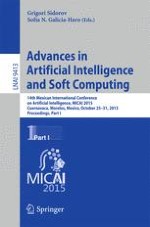2015 | OriginalPaper | Chapter
Low-Level Features for Paraphrase Identification
Authors : Ekaterina Pronoza, Elena Yagunova
Published in: Advances in Artificial Intelligence and Soft Computing
Publisher: Springer International Publishing
Activate our intelligent search to find suitable subject content or patents.
Select sections of text to find matching patents with Artificial Intelligence. powered by
Select sections of text to find additional relevant content using AI-assisted search. powered by
